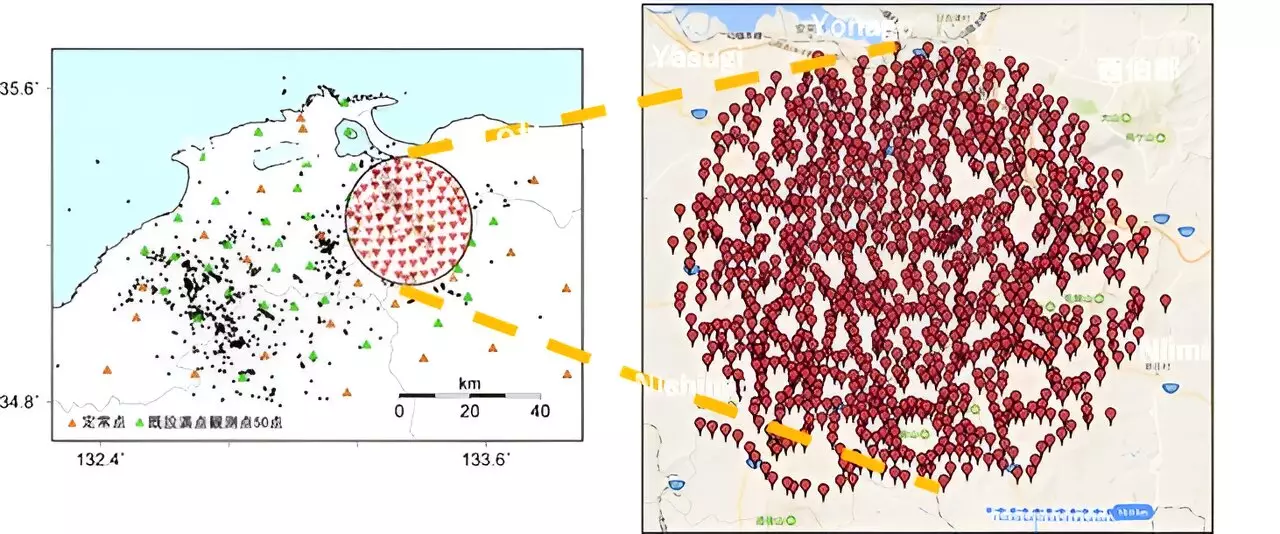Japan, situated on the Pacific Ring of Fire, is synonymous with seismic activity due to its geographical configuration. This archipelago experiences thousands of minor tremors yearly, compounded by the looming risk of monumental earthquakes that can reshape towns and lives. While scientists have yet to develop an accurate method for predicting these catastrophic events, ongoing research strives to decode the underlying mechanisms informing their occurrence. Recent findings from teams at Kyushu University and the University of Tokyo shine a light on the intricacies of fault mechanics by establishing a revealing connection between fault strength and the magnitudes of earthquakes.
Understanding the b-value: Its Role in Seismic Events
The research published in *Nature Communications* highlights a crucial parameter in seismology: the b-value. This coefficient illustrates the correlation between the frequency of earthquakes and their respective magnitudes. Professor Satoshi Matsumoto, a prominent figure in this study, elucidates the practical implications of the b-value. When the b-value is low, it implies a higher frequency of substantial earthquakes, while an elevated b-value indicates a predominance of minor quakes. This phenomenon is not static; it varies geographically and temporally, often manifesting a decline in anticipation of significant seismic events. The prevailing hypothesis suggested that a decrease in the b-value is primarily attributable to surging stress in the fault zones. However, the recent research emphasizes that the intrinsic strength of faults also plays a pivotal role.
To delve deeper into these seismic intricacies, researchers focused on the aftermath of the Western Tottori Earthquake, which struck in 2000 with a magnitude of 7.3. With over 1,000 meticulously placed seismic stations, the research teams garnered comprehensive data regarding seismic activity in the region. Matsumoto notes that even years later, an array of aftershocks, many imperceptible to human senses, continues to unfold. The strategic deployment of sensors allowed the collection of minute fault movements and orientations, enabling the researchers to ascertain the prevalent stress conditions that contribute to fault behavior.
The significance of this data lies in its ability to classify faults as strong or weak based on their response to stress. Essentially, the orientation of a fault—defined by specific stress conditions—dictates its likelihood to slip. When faults are aligned unfavorably, they become categorized as weak and slip more readily. Conversely, strong faults demand greater levels of stress before yielding.
Implications of Fault Strength on Earthquake Predictions
The researchers’ findings further illustrated a relationship between fault strength and the b-value, affirming that stronger faults are linked to lower b-values, indicating a higher probability of major earthquakes. In stark contrast, weaker faults yield higher b-values, signifying that they are less likely to produce significant quakes. The insight posited by this research indicates that weaker faults dissipate stress before it escalates to critical levels, lacking the potential for massive energy release.
This understanding could pivotally enhance approaches toward earthquake prediction. While comprehensive prediction of earthquakes remains elusive, focusing on parameters such as fault direction and fault strength may improve the accuracy with which scientists can estimate when a fault is nearing its tipping point. According to Matsumoto, it is unlikely that scientists will pinpoint the exact moment of an earthquake’s occurrence, but a refined understanding of b-values, correlated with other geological factors, could provide critical insights into impending seismic activity.
As researchers continue to scrutinize the nuances of seismic data, the mystery surrounding earthquake prediction becomes increasingly decipherable. Gaining insights into fault strengths and their consequent effects on b-values transforms our understanding of earthquake dynamics. The connection forged between these elements fosters hope that, while precise predictions may remain out of reach, we can inch closer toward effective early warning systems.
Through such groundbreaking research, scientists aim to navigate one of nature’s most formidable challenges—expanding the frontline of human resilience against earthquakes and perhaps saving lives in the process. Acknowledging that while the ultimate prediction capability may still be a distant goal, advancements in understanding seismic mechanisms offer a beacon of hope for communities residing in earthquake-prone regions.

